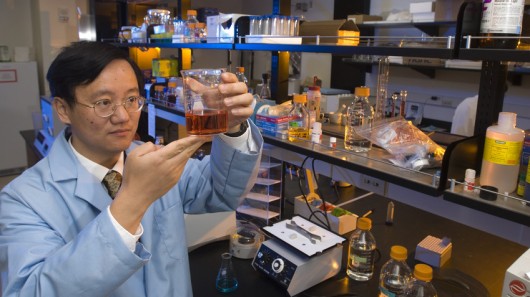Although the causes of world hunger are numerous, it certainly doesn’t help that factors such as arid conditions and limited land space make it difficult to grow food crops in certain places. If people in those areas could eat foods derived from plants that are hardy to the region, but that aren’t considered nutritious, it would go a long way towards addressing the problem. Well, that may soon be a reality, thanks to a newly-developed process that allows cellulose to be converted into starch.
Cellulose is the most common carbohydrate on Earth, and is found in the cell walls of plants. Starch, on the other hand, makes up about 20 to 40 percent of the daily caloric intake in the typical human diet.
In the new process, developed by a Virginia Tech team led by associate professor Percival Zhang, approximately 30 percent of the cellulose from any plant material (including agricultural waste) can be converted into a starch known as amylose – it’s a good source of fiber, as it isn’t broken down in the digestive tract. Additionally, according to Virginia Tech, it has been proven to decrease the risk of obesity and diabetes.
“Cellulose and starch have the same chemical formula,” said Zhang. “The difference is in their chemical linkages. Our idea is to use an enzyme cascade to break up the bonds in cellulose, enabling their reconfiguration as starch.”
The process requires no heat, costly equipment or chemical reagents, and it doesn’t produce any waste. The 70 percent of the cellulose that doesn’t get converted into starch is instead hydrolyzed to glucose, which could subsequently be used in ethanol production.
Zhang added that the starch could be used not just in food, but also as a component of clear biodegradable food packaging, or even as a high-density hydrogen storage carrier.
A paper on the research was published this week in the journal Proceedings of the National Academy of Sciences of the United States of America.
Source: Virginia Tech
Copyright © gizmag 2003 - 2013 To subscribe or visit go to: http://www.gizmag.com
